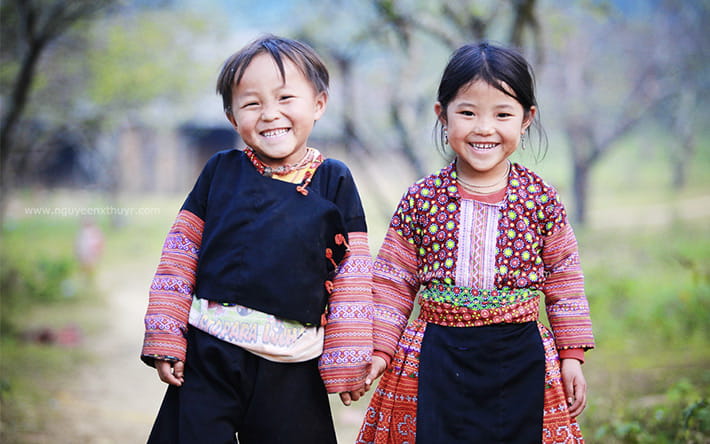
Need to create your own Vietnam Trip?
Call us now +84 92-8833-899 (Whatsapp)
Customize your tourA trip to the Northern part of Vietnam will be incomplete without including Sapa. Renowned for its natural and cultural beauty, Sapa is set in the Northwest mountain area of Vietnam, a 5 hour drive from Hanoi. Apart from the picturesque scenery of terraced rice field and plunging valley view, Sapa is also famed for its diverse mix of ethnic minorities. Among the best known are the Hmong, Yao, Tay and Giay, each with their own traditions, costumes, languages and livelihoods.
 Image source: sinhadventure.com
Image source: sinhadventure.comHmong are everywhere in Sapa, particularly in Cat Cat Village. Like all of Vietnam’s ethnic groups, the can be identified by their distinctive clothing; wearing natural fabrics dyed deep blue, whilst other Hmong, such as the Flower Hmong, embellish their clothing with colourful embroidery. The Black Hmong in particular are known for their clothing, and their meticulously crafted fabrics and garments can be found in local markets round the Sapa region. If you find yourself in Sapa around January time, you might be lucky enough to witness Gua Tao festival, the largest annual Hmong festival. Here you will see ancient spectacles such as archery, pipe dancing and horseracing. If you’re feeling brave, you can even ask to have a go!
 Image source: vietnamtourism.gov.vn
Image source: vietnamtourism.gov.vnThe Dao’s scarlet turbans set them apart from Sapa’s other minorities. However, these also differ between the differing subgroups; some being adorned with silver coins or yellow pompoms, for example. The Dao migrated across Southeast Asia before the Hmong, with some estimates putting Dao migration at from the 12th century. The modern Dao have adapted to their surroundings and have a strong reputation for breeding livestock. The Tet Nhay Festival is held annually on 1st and 2nd January in their home village of Ta Phin, where you may be able to pick up a pair of their highly coveted brocade footwear.
 Image source: leadtravel.com.vn
Image source: leadtravel.com.vnIn Vietnam as a whole, the Tay’s make up the second biggest ethnic group in Vietnam, second only to the dominant Viet, however even with this in mind they only comprise around 2% of the total population of the country. Their roughly 1.7 million mainly inhabit the southern Sapa region. The national dress of the Tay people is much simpler than that of other minorities, comprising of hand-woven indigo material with no or minimal patterning. The men usually wear baggy trousers and shirts, while the women wear simple dresses and headwear. Their houses are built on stilts two meters above the ground to protect them from dangerous animals, and it is possible to book one as a homestay!
 Image source: dulichsapa365.vn
Image source: dulichsapa365.vnThe Xa Pho people are amongst the smallest ethnic groups in Vietnam. The Xa Pho are believed to have come from southern islands of Asia, such Malaysia and Indonesia. Like many other ethnic minorities, the Xa Pho are primarily subsistence farmers, planting corn, potato, and cassava. The most popular holiday for the Xa Pho is the village-cleaning festival, often celebrated at the same time as the lunar new year of Vietnam.

Local people are welcoming and hospitable to foreigners. Despite its reputation as being remote and ‘untouched’, most ethnic folk are already well accustomed to seeing tourists.
Last update: